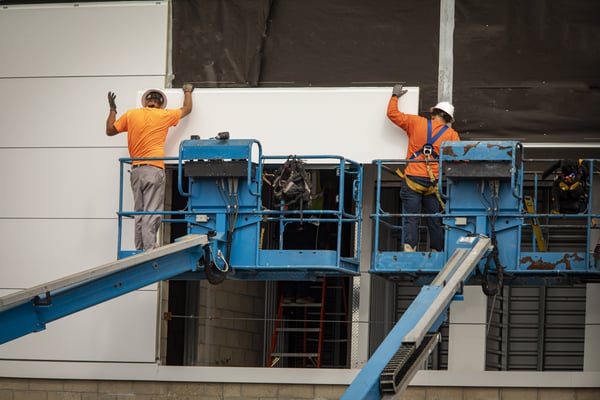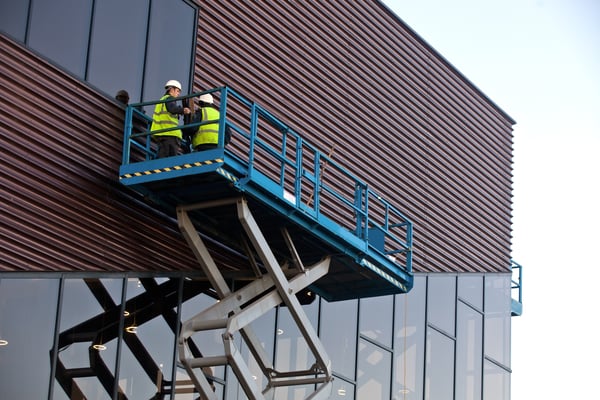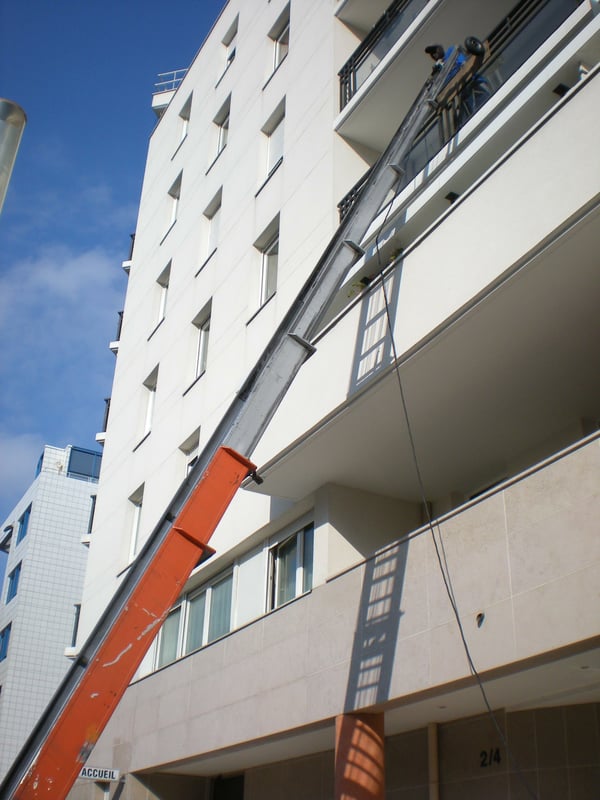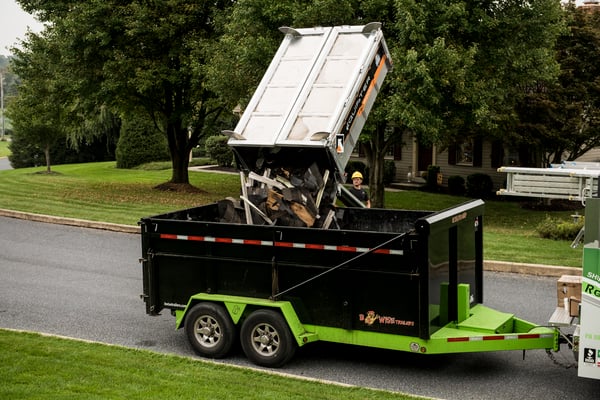Professional general contractors use the most efficient equipment to get the job done right.
But what types of construction equipment do they prefer?
That depends on the job.
Although not every piece of construction equipment works on every single job, each has its own advantages.
Here is a list of handy types of construction equipment and their applications.
1. Manlifts

Also commonly referred to as aerial lifts, manlifts are useful for a variety of general construction jobs. They’re ideal for many projects because they allow the user to move either side to side or up and down, providing access to hard-to-reach spots and more complicated heights. Some popular applications include the following:
- High ceiling installation or repair
- Renovations
- Warehouse construction projects
Although they’re practical, manlifts aren’t exactly the safest piece of equipment to have on a job. Safety and operation training sessions are essential to make sure crew members are operating the equipment correctly in order to avoid job site injuries (or even death).
For more training info and best practices for operating manlifts safely, consult OSHA or see BigRentz Inc’s article “How to Stay Safe While Operating a Manlift."
2. Scissor Lifts

Scissor lifts are also referred to as elevated work platforms, some models extending up to 60 feet high. General contractors sometimes use scissor lifts as material lifts, and some use them for tasks like gutter and window cleaning.
Sure, you can use a scissor lift as a manlift, but it’s not as versatile in its movement. Scissor lifts only raise vertically rather than also side to side, and fall protection guidelines are different than those for aerial lifts.
Be sure to do your research if you find you need to choose between a standard scissor lift or aerial lift. Industrial Safety & Hygiene News has more information on the differences between the two main types of lifts.
3. Ladder Hoists

Ladder hoists are particularly handy for roofers. They’re ideal for lifting heavier materials, like multiple bundles of shingles at a time, which saves a lot of backbreaking work. Utilizing ladder lifts can help preserve energy during preparation, so workers can allot more strength in completing the job. It also helps prevent damaged materials, since there’s no risk of the contractor slipping and falling off an extension ladder while hauling everything to the roof.
Ladder hoists also often come with special attachments that allow general contractors to customize the equipment to suit their needs. These features may also be helpful for getting fragile solar panels onto a roof.
4. Self-Propelled Dump Trailers

These powerful pieces of roofing and construction equipment go above and beyond hauling trash. Self-propelled dump trailers and containers are the most practical, multifunctional tools to have on virtually any job site. Whether you’re looking for a way to lift heavy materials to the roof or eliminating the task of manually lugging board after board of drywall up two flights of stairs, construction equipment like the self-propelled RB4000 trailer can help.
Equipter offers a wide array of self-propelled dump containers that serve many purposes on a single job. Many contractors use our most popular model, the RB4000, to do the following:
- Pick up materials from local suppliers, cutting delivery charges
- Tow tools and materials to the job
- Drive tools and materials across the job, eliminating backbreaking setup tasks
- Lift tools and materials up to 12 feet, decreasing the risk of job site injuries
- Lift and dump trash in a curbside dumpster, reducing the amount of debris left on customers’ properties
Benefits of using drivable dump trailers include but aren’t limited to these:
- No damaged flowerbeds or ruts in yards
- Safer, cleaner job site
- Faster job completion
- More positive customer reviews
- Increased referral rates
Mastering commercial and residential projects can only be done with the right construction equipment. This article is meant as an informative guide, but don’t just take our word for it. Do your research and test the equipment before you make your next investment.
